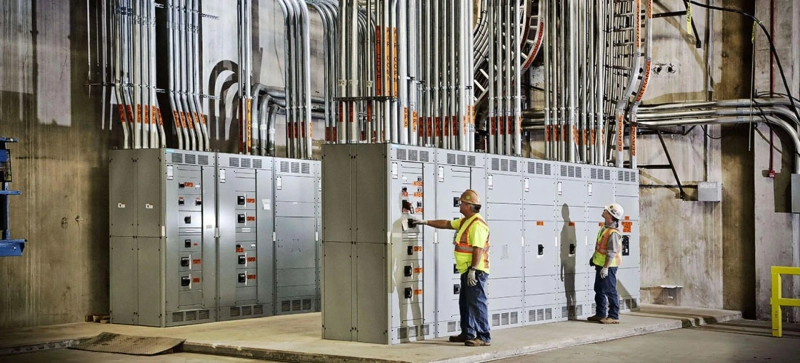The most common problems in industrial electrical installations related to power quality are listed below, along with their description, causes and consequences:
voltage drops
Description: A drop from the normal voltage level to between 10 and 90 percent of the nominal rms voltage at power frequency for a duration of 0.5 cycles to one minute.Causes: Failures in the transmission and distribution network (most of the time in parallel feeders). Failures in consumer installations. Connections with heavy loads and the starting of large motors.Consequences: Malfunction of information technology equipment, such as microprocessor control systems, which could lead to stoppage of operations. Failure of electromechanical contacts and relays. Disconnection and loss of efficiency in electrical rotating machines.very short breaks
Description: Total power outage from a few milliseconds to one or two seconds.Causes: Mainly due to the opening of the automatic closure of protection devices to dismantle a faulty section of the network. The main faults are due to poor insulation and a short circuit.Consequences: Fall of protection devices, loss of information and failure of data processing equipment. Shutdown of important equipment, such as PLCs, PCs and ASDs if they are not prepared to deal with a situation like this.long breaks
Description: Total interruption of the electrical supply for a duration of more than two seconds.Causes: Equipment failure in the power system network, storms and objects impacting power lines, fire, human error, poor coordination or failure of protection devices.Consequences: Total stoppage of operations in all equipment.voltage spikes
Description: Very fast variations of the voltage value from a few microseconds to a few milliseconds. These can reach thousands of volts, even at low voltage.Causes: Lightning, change of lines or disconnection of heavy loads.Consequences: Destruction of components (particularly electronic) and insulating materials, errors in data processing, loss of information and electromagnetic interference.voltage rise
Description: Momentary increase in voltage, at power frequency, outside normal tolerance for more than one cycle and less than a few seconds.Causes: Starting or stopping of heavy loads, incorrectly sized power sources or poorly regulated transformers (mainly during off-peak hours).Consequences: Loss of information, flashing screens and lights, and damage to sensitive equipment if the voltage is too high.harmonic distortion
Description: The voltage assumes a non-sinusoidal shape. The waveform corresponds to the sum of different waves with different magnitude and phase having frequencies that are multiples of the power system frequency.Consequences: Increased probability of resonance occurrence, neutral overload in three-phase systems, overheating of equipment cables, loss of electrical efficiency in machines, electromagnetic interference in communication systems, measurement errors when they use normal readers and thermal protectors fail.voltage variation
Description: Oscillations in the value of the voltage, amplitude modulated by a signal with a frequency of 0 to 30 Hz.Causes: Electric arc furnaces, switching on and off of electric motors (such as elevators) or oscillating loads.Consequences: Screens and intermittent lights and instability in the entire electrical network.Noise
Description: Superposition of high frequency signals on the power system frequency waveform.Causes: Electromagnetic interference caused by hertzian waves such as those from microwaves or televisions, radiation emitted by welding machines, electric arc ovens or even inadequate grounding.Consequences: Disturbances in sensitive electronic equipment. It can cause loss of information.voltage imbalance
Description: A variation in voltage in a three-phase system in which the magnitudes between them are not equal.Causes: Large loads of a single phase, incorrect distribution of each one of the loads of a single phase by the three of the system.Consequences: Unbalanced systems imply the existence of a negative sequence that is harmful to the loads of the three phases. The most affected are the three-phase induction machines.Electrical Relay testing India
The 7 main causes of failures in electrical substations
0



